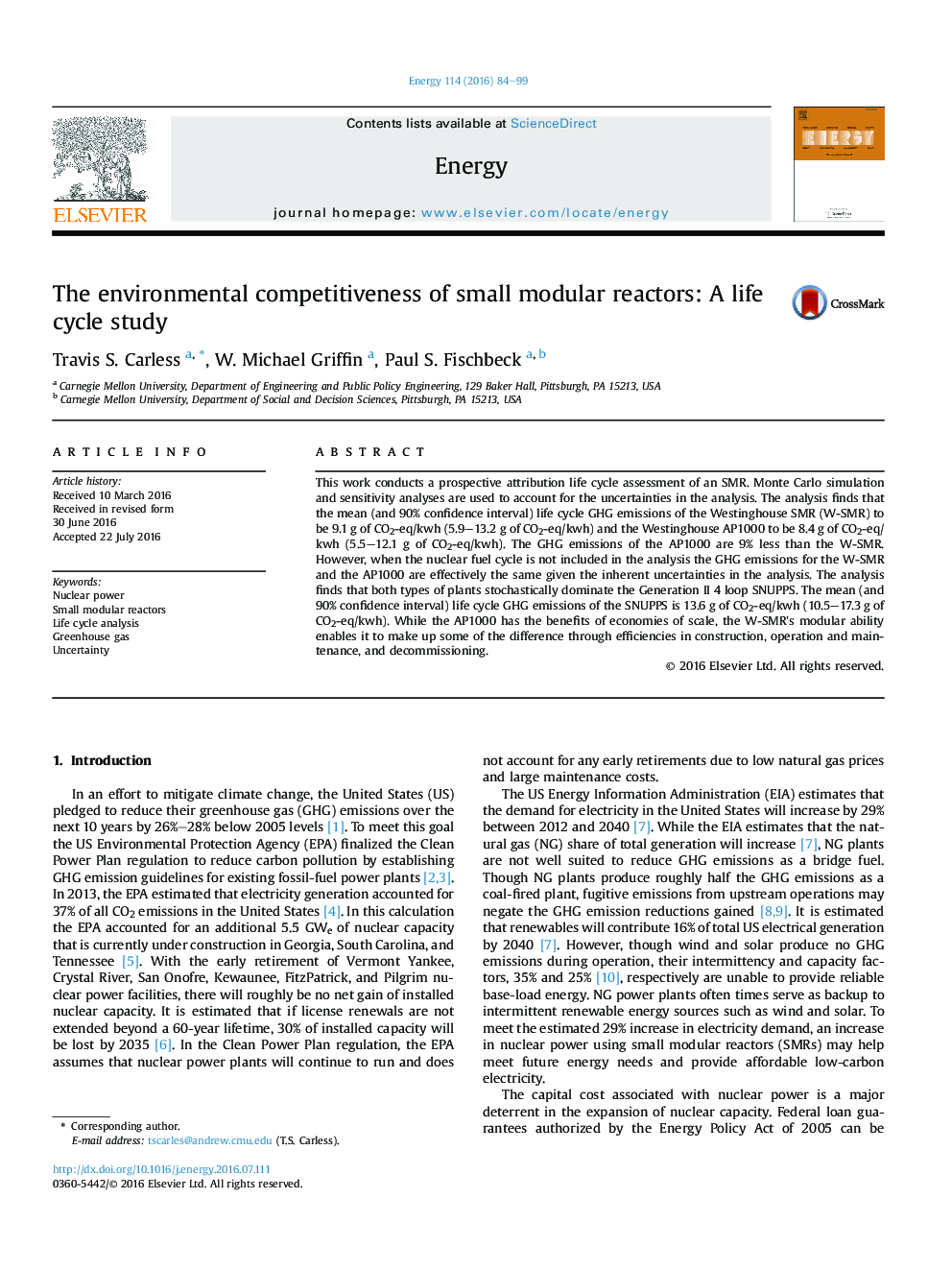| Article ID | Journal | Published Year | Pages | File Type |
|---|---|---|---|---|
| 8072830 | Energy | 2016 | 16 Pages |
Abstract
This work conducts a prospective attribution life cycle assessment of an SMR. Monte Carlo simulation and sensitivity analyses are used to account for the uncertainties in the analysis. The analysis finds that the mean (and 90% confidence interval) life cycle GHG emissions of the Westinghouse SMR (W-SMR) to be 9.1Â g of CO2-eq/kwh (5.9-13.2Â g of CO2-eq/kwh) and the Westinghouse AP1000 to be 8.4Â g of CO2-eq/kwh (5.5-12.1Â g of CO2-eq/kwh). The GHG emissions of the AP1000 are 9% less than the W-SMR. However, when the nuclear fuel cycle is not included in the analysis the GHG emissions for the W-SMR and the AP1000 are effectively the same given the inherent uncertainties in the analysis. The analysis finds that both types of plants stochastically dominate the Generation II 4 loop SNUPPS. The mean (and 90% confidence interval) life cycle GHG emissions of the SNUPPS is 13.6Â g of CO2-eq/kwh (10.5-17.3Â g of CO2-eq/kwh). While the AP1000 has the benefits of economies of scale, the W-SMR's modular ability enables it to make up some of the difference through efficiencies in construction, operation and maintenance, and decommissioning.
Related Topics
Physical Sciences and Engineering
Energy
Energy (General)
Authors
Travis S. Carless, W. Michael Griffin, Paul S. Fischbeck,
